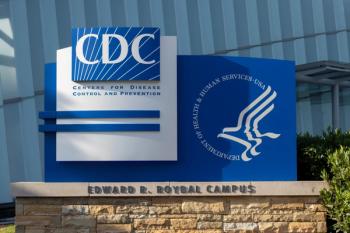
Study Evaluates Impact of CDI on Patients With Cystic Fibrosis
Patients with cystic fibrosis are typically administered antibiotics throughout their lives, which can increase the risk for C difficile infections.
Pediatric patients with cystic fibrosis (CF) commonly have asymptomatic colonized
The study, conducted by reseachers from the Division of Molecular Pathogenesis, Department of Pathology, Microbiology & Immunology at Vanderbilt University Medical Center, analyzed the rate, risk factors, and sequelae of asymptomatic C difficile colonization in pediatric patients with cystic fibrosis.
Patients with CF are typically administered antibiotics throughout their lifespans. As such, these patients commonly have an altered intestinal microbiome, which is a known risk factor for CDI.
However, adult patients with CF are rarely diagnosed with CDI and asymptomatic colonization with C difficile frequently occurs. C difficile colonization has been reported in 22%-50% of adult patients with CF compared with 5%-10% in the general population. According to the study, there are multiple reasons why health care providers are concerned over colonization in patients with CF.
“First, it creates a diagnostic challenge in patients presenting with signs and symptoms of CDI,” the study authors wrote. “While constipation is the predominant manifestation of CF dysmotility, loose stools and diarrhea also occur related to pancreatic insufficiency and overflow diarrhea.”
The study authors collected 108 unique stool samples from pediatric patients with CF without acute gastrointestinal symptoms and performed NAAT C difficile testing with prospective follow-up. The researchers then performed nucleic acid amplification of the C. difficile Toxin B gene.
Patients in the study were less than 18 years of age and diagnosed with CF at the Monroe Carell Jr. Children's Hospital at Vanderbilt. CF was confirmed via medical record verification of 2 sweat chloride tests ≥60 mmol/L or 2 pathogenic CFTR variants on genetic testing.
The study authors found 32% (n = 35) of pediatric patients with CF were colonized with C difficile without acute gastrointestinal symptoms. The results mirrored what has been found in adults with CF; however, the studies differ in C difficile testing approach, according to the authors of the current study.
Further, there were no patients with colonized C difficile who developed CDI over the course of the 90-day follow-up.
“Higher [body mass index] BMI and exposure to specific antibiotic classes (cephalosporins, fluoroquinolones, and vancomycin) were significantly associated with C. difficile colonization,” the investigators wrote. “No children developed symptomatic CDI in 90-days following enrollment.”
Prior research suggests that the target BMI of a patient with CF should be reconsidered, according to the authors of the current study. Although the prevalence of overweight and obesity among patients with CF has been growing, data are unclear on whether there is a benefit to increasing weight vs the normal reference range.
According to the current study, patients with CF who had a normal weight experienced a higher forced expiratory volume in the first second of expiration vs individuals who were overweight or obese. Further, patients with CF at a normal weight had greater higher odds for CF-related diabetes and pancreatic insufficiency.
The study found that nutritional status did not affect organ function in patients with CF. According to the study authors, a nutritional strategy that increases BMI closer to the upper limit of the normal BMI should be included in daily protocol.
Reference
Reasoner Seth A, et al. Prevalence, risk factors, and sequelae of asymptomatic clostridioides difficile colonization in children with cystic fibrosis, Journal of Cystic Fibrosis. Elsevier. Available at
Newsletter
Stay informed on drug updates, treatment guidelines, and pharmacy practice trends—subscribe to Pharmacy Times for weekly clinical insights.




















































































































































































































